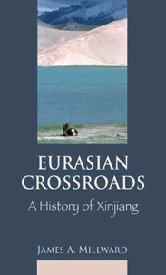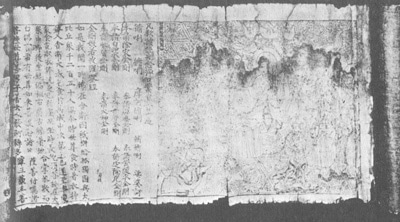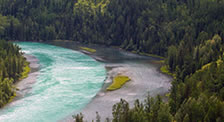Eurasian Crossroads Review | Xinjiang History
For anybody who is interested in Central Asian history, specifically the history of China’s western region of Xinjiang, there is no better English source than Eurasian Crossroads. This is my review of the book.
Eurasian Crossroads: A History of Xinjiang
Columbia University Press
by James A. Millward
Review by Josh Summers
The term “History of Xinjiang” is very difficult to grasp. Besides the relatively sparse written records of the region and the fact that it has been recorded in a multitude of languages, the most frustrating aspect of the term is that “Xinjiang” as we know it today has only been in existence for a couple hundred years.
There are quite a number of people, especially those with political agendas, who claim an intimate understanding of the region’s history, but very few would be qualified to compile it into a book. Despite my years of living and studying in Xinjiang I readily admit that I could not fill that role.
Thankfully the author of Eurasian Crossroads: A History of Xinjiang is not only qualified, he also brings to the table a very objective and apolitical view of Xinjiang.
James A. Millward is a professor at Georgetown University who specializes in the history of China and Central Eurasia. He has been published in a variety of scholarly journals and authored at least two other books that I can find on the Qing empire in China.
Within the very small world of dedicated Xinjiang scholars, Millward’s name stands out as one of the most recognizable and well-respected.
Brief Look at the History of Xinjiang
Millward expresses the goal of Eurasian Crossroads: A History of Xinjiang in the preface of his 2007 work:
Although there are important specialised works in English on Xinjiang history, for the non-specialist reader these have been somewhat hard to find and hard to grasp…This book, then, is an attempt to fill that gap with a synthetic survey of the history of the Xinjiang region from the earliest times to the present.
In the chapters that follow the reader is led through a chronological review of Xinjiang’s history that is meant to be accessible both to those who are at least familiar with Central Asian history as well as to those who aren’t.
Unfortunately for Millward, the Xinjiang region doesn’t lend itself to simple understanding. If you think that the only two major characters in Xinjiang’s story are the Han and Uyghur, the first three chapters of this book will come as quite a surprise.
Xiongnu, Soghdians, Qarluqs, Qara Khitay, Chaghatayids and many other names I can’t easily pronounce make up a patchwork of Central Asian groups that play key roles in the region’s development.
As frustrating as this portion of the book is to follow, it effectively communicates the fluid nature of Xinjiang’s early history. Up until the past few centuries, official boundaries and the balance of power have shifted with confusing regularity; also, due to Xinjiang’s large size, events in the north often carried no relation to those in the south.
It wasn’t until China’s Qing empire in the 18th century that present-day Xinjiang began to take shape.
Whereas the first third of the Eurasian Crossroads: A History of Xinjiang touches on selective events from the Stone Age until the 19th century, the middle portion focuses on the struggles between the Qing, Soviet Union, and local leaders.
Although Xinjiang was officially given the status of “province” during this time, it was also a period of many rebellions including the establishment of an independent republic.
In a respectably unbiased way, Millward also explores the influence of religion, specifically Islam, on the events that occurred from the 18th to the 20th centuries. The significance of Islam is ironically emphasized by both modern Uyghur and Chinese historians to serve their own interests, but as Millward explains:
Xinjiang Muslims had lived in relative peace and stability under Qing rule for a century before these [uprisings and rebellions], and faith in Islam did not lead to unrest…it was economic distress and rampant misrule…
The final third of the book explores the modern relationship between the People’s Republic of China and its people. From the creation of a farm/military base called bingtuan to the mass migration of Han people into the province, it’s clear that the new government was serious about developing and profiting from this portion of Asia.
Final Thoughts | Xinjiang History
Overall, Eurasian Crossroads: A History of Xinjiang provides an educational review of Xinjiang’s history reduced to a single volume with a helpful historical timeline and a long bibliography for deeper study. Unlike Christian Tyler’s Wild West China, this book offers a scholarly, politically-detached version of Xinjiang history that doesn’t ingratiate itself to either modern Uyghur or Chinese historians.
For those looking to better understand the conflict between Uyghur and Han in Xinjiang within the context of history or for those who perhaps need a reliable reference tool for research on Central Asia, Eurasian Crossroads: A History of Xinjiang is both well-written and well-documented.
The book’s only shortcoming, as best articulated in another review by The New Dominion (now defunct), is the scant use of Uyghur sources to build accounts of many parts of Xinjiang’s history. As one who personally can’t read Uyghur I would find it hypocritical to judge Millward on this point were it not for his comment on the review.
Millward alludes to the idea that although Eurasian Crossroads: A History of Xinjiang is comprehensive, there is still much more to learn about Xinjiang. In his comment he speaks to those of us who carry a deeper passion for the province and its history:
I used Uyghur sources in [specific sections of the book], but not elsewhere, to be sure. Lots more for the rest of you to do!
Further Xinjiang Reading
If you enjoy reading about Xinjiang and the Silk Road, this is just one of many other great Xinjiang books that I’ve reviewed on this site:
- Foreign Devils on the Silk Road (Review): a gripping retelling of the Great Game story
- English by Wang Gang (Review): a translation of a popular Chinese novel written by a man who grew up in Xinjiang
- A Tree That Bleeds (Review): another Xinjiang book written from the perspective of a foreigner
- The Horse That Leaps Through Clouds (Review): one man’s adventure to retrace the steps of an early Silk Road explorer






